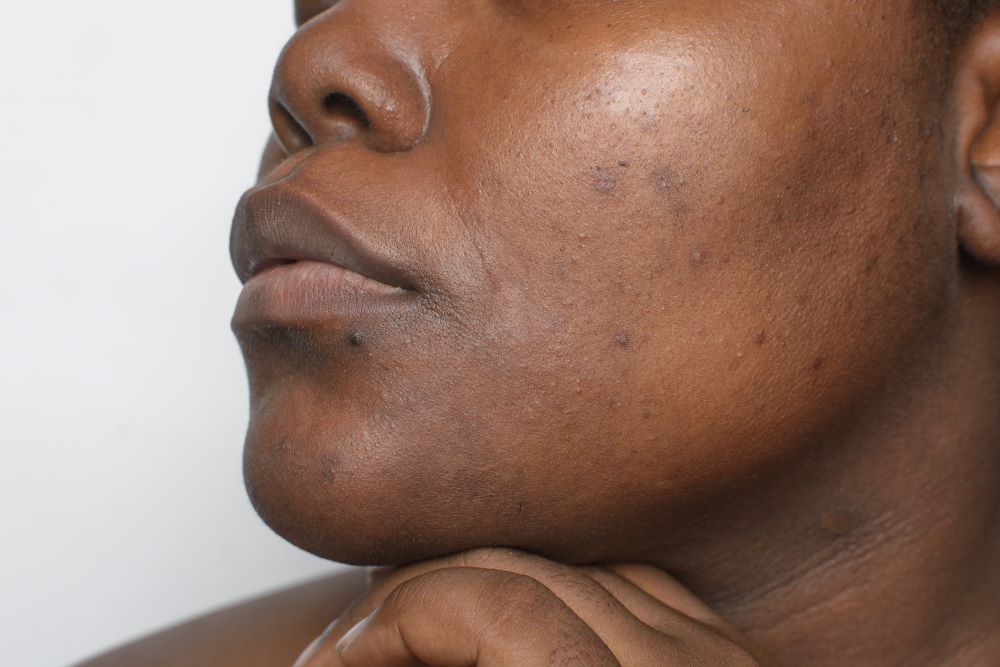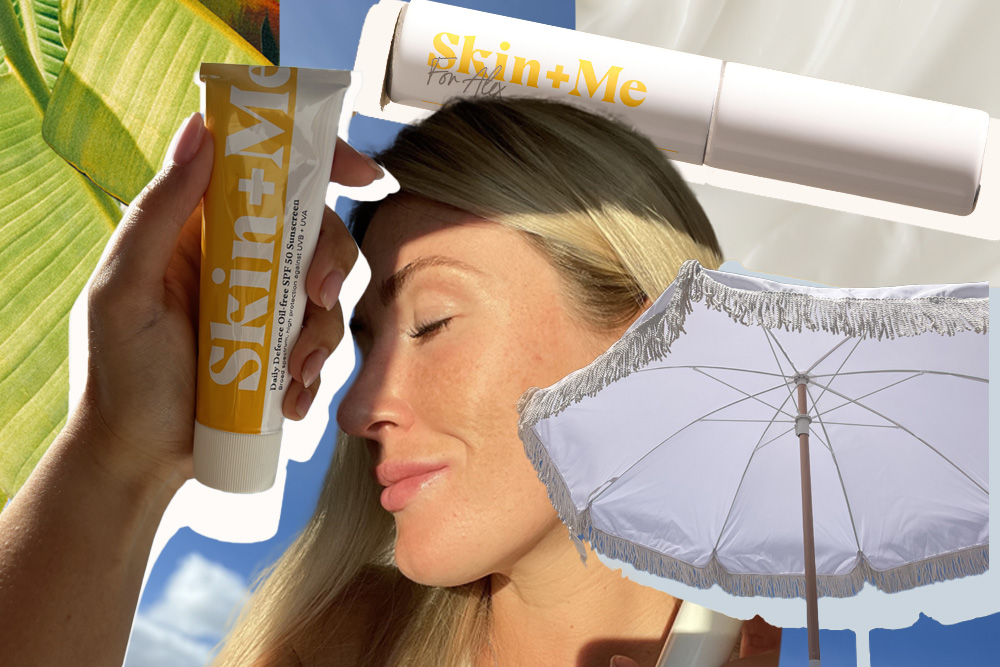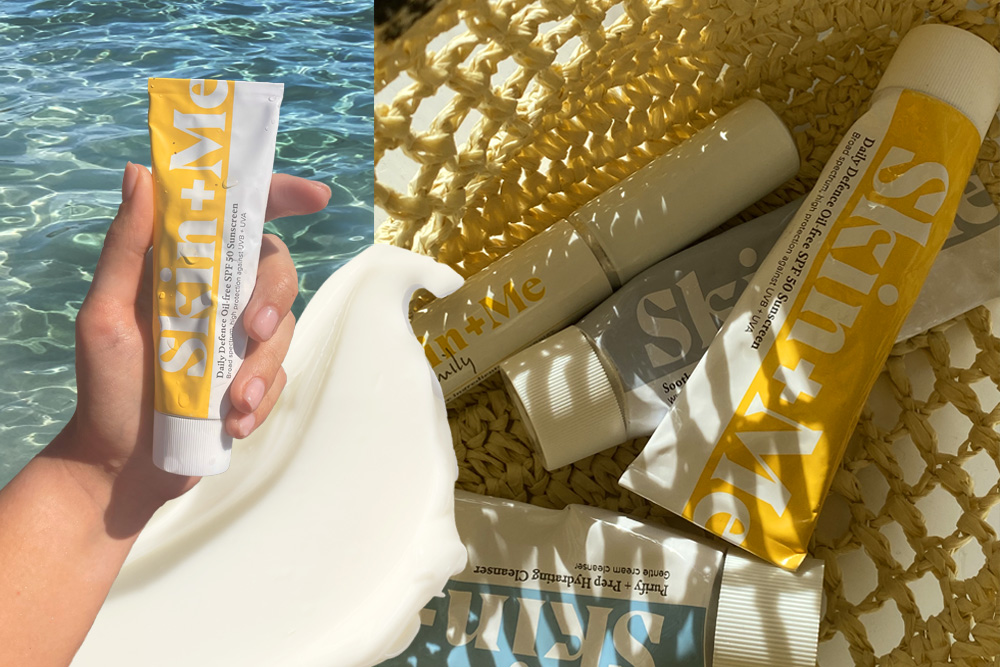Melasma 101

Link to share article here:
Hyperpigmentation 101
From freckles and moles to post-acne marks and sun spots, pigmentation is a broad topic in the world of skincare, so let’s get to know it a little better.
Today on The Dose, we’re looking at hyperpigmentation – what it is, what causes it and how to treat it. Read on for tips, tricks and, of course, expert advice from the Skin + Me Dermatology Team.
What is hyperpigmentation?
Hyperpigmentation is a skin condition that makes some areas of the skin darker than others. To take the word literally, “hyper” means more, “pigment” means colour. The colour differs depending on your skin colour, so lighter skin tones will see light brown or red marks, and darker skin tones will see darker brown or grey marks.
Dr Malvina Cunningham, Consultant Dermatologist at Skin + Me explains, “Hyperpigmentation is due to an increased amount of melanin produced within the skin that causes dark spots or patches to appear on the skin’s surface. It is a common problem and can be triggered by a number of underlying skin conditions.”
What causes pigmentation?
“Our skin’s natural colour is determined by a pigment called melanin that is produced by cells in the top layer of our skin.”
DR MALVINA CUNNINGHAM
To save you from dusting off your old biology textbook, the amount of melanin in your body is caused by your genetics. This means that traits are passed down from parent to child, and so on. When the body produces excess melanin, it shows up in patches on your skin – this is hyperpigmentation.
Lots of different factors can cause hyperpigmentation, including environmental factors like sun exposure, physiological factors like your hormones, inflammation from acne, eczema and psoriasis or certain medications.
Are there different types of hyperpigmentation?
Yes! There are many different kinds of hyperpigmentation, but we’re going to focus on the three most common types: melasma, sunspots and post-inflammatory hyperpigmentation.
MELASMA
Dr Malvina tells us, “The exact cause of melasma is as yet unknown, but we do know that hormones and ultraviolet (UV) light (from the sun’s rays) play an important role.”
Melasma is commonly associated with pregnancy and menopause due to its relationship with your hormones – you might have heard it referred to as “the mask of pregnancy.” It usually results in brown or greyish skin patches across the face, but can also appear on your neck and arms. Another sign of melasma is that the pigmentation is usually symmetrical.
SUNSPOTS
Also known as solar lentigos, age spots and liver spots, these are primarily caused by sun exposure.
Sunspots appear as flat brown spots on the skin like enlarged freckles and are mostly found over sun-exposed areas such as the nose, cheeks and temples, but they can appear anywhere on the face as well as on your chest and the back of your hands.
Dr Malvina reminds us, “While most sunspots are harmless they may occasionally change into precancerous or even cancerous lesions. If you notice a spot that stands out compared to others with an irregular shape, varied colours or changing size, go and see your GP to have it checked out.”
“While most sunspots are harmless they may occasionally change into precancerous or even cancerous lesions.”
dr malvina cunningham
POST-INFLAMMATORY HYPERPIGMENTATION
Post-inflammatory hyperpigmentation (PIH) is caused by inflammatory skin conditions such as acne, eczema and psoriasis. Dr Malvina tells us, “It’s characterised by dark marks caused by an increase in the amount of melanin produced by the skin as a consequence of inflammation in acne.”
If you have lighter skin, the marks will initially appear as red or pink; if you have a darker skin tone, the marks will appear purple-brown. When the spots have healed, brown or dark brown spots appear over the site of acne.
Dr Malvina also explains that PIH is different from acne scarring, “They are actually very different as hyperpigmentation is defined as colour change only, without any structural changes to the skin, although scarring and hyperpigmentation can of course coexist.”
“The key difference between hyperpigmentation and scarring is that darker spots are not associated with a change in the structure of the skin, the skin will also feel flat and lacks the usual indentation seen in true scarring.”
How can you remove or even out pigmentation?
It’s important to remember that hyperpigmentation isn’t usually something to be concerned about, but if you do want to remove it or even out your skin tone, there are a few things you can do.
PROTECT
Your first port of call is sunscreen. Wearing a high SPF (30 or higher) sunscreen every single day is really important, as this prevents sun damage and stops further pigmentation from appearing.
It’s also good to practise safe suncare. Dr Jason Thomson, Head of Medical at Skin + Me, explains, “Sunscreen is only one tool in your armoury against the sun’s damaging rays and no sunscreen is 100% effective. Good sun behaviour also includes wearing protective clothing, sunglasses and seeking shade between 11am and 3pm.”
Make sure you don’t pick at your skin either, especially if you have spots, as doing so will increase both inflammation and hyperpigmentation.
TREAT
Next up, topicals. Using active ingredients on a regular basis can help minimise the appearance of hyperpigmentation and even out your skin tone over time.
Actives like tretinoin (a retinoid) and hydroquinone (a skin lightener) are very powerful ingredients, which work to fade the appearance of sunspots or PIH marks. They work by stopping melanin production, so are commonly prescribed by a dermatologist or your GP to treat pigmentation concerns like melasma, PIH or sunspots.
Dr Malvina tells us, “Hydroquinone is the gold standard lightening agent and is usually available as a combination cream with a prescription-strength retinoid and a mild topical steroid. It is usually used in short treatment periods after acne treatment has been completed.”
If either of these ingredients are in your personalised solution from Skin + Me, be sure to read the Patient Information Leaflet for more information. You can also email our team at hello@skinandme.com for personalised advice from your Prescriber.
Other actives like azelaic acid, niacinamide, vitamin C, tranexamic acid, glycolic acid, alpha arbutin and kojic acid can also help treat pigmentation concerns. They’re milder than tretinoin and hydroquinone, but still really effective.
“Azelaic acid can be a great treatment for PIH. It’s well tolerated and can be combined with other topical acne treatments such as retinoids.”
dr malvina cunningham
AESTHETIC TREATMENTS
There’s also the salon route – targeting your pigmentation with aesthetic treatments such as chemical peels, microdermabrasion and laser therapy.
Chemical peels and microdermabrasion work to resurface the skin by exfoliation – removing dead skin cells on the outer layer, improving the appearance of hyperpigmentation. These techniques involve removing the upper layers of the skin to reveal smooth, more radiant skin. They can also increase collagen production to improve the appearance of fine lines and wrinkles, a nice bonus.
“If topical treatment has failed, chemical peels can be effective but these are associated with greater downtime.”
dr malvina cunningham
Similarly to laser hair removal, laser therapy for pigmentation works to break up the melanated skin cells, using a beam of light to target them. It’s a more aggressive type of treatment and, like laser hair removal, will usually require more than one session to see results.
How long does it take to treat hyperpigmentation?
Results can vary depending on the type of pigmentation you have, and the actives you’re using. With pigmentation, you’ll usually start to see meaningful results in the mirror after 16 weeks of using a personalised solution from Skin + Me. However, prescription skin treatments can take time to work, so patience and consistency are key to achieving the best results.
The bottom line
Hyperpigmentation is a really common skin concern, especially if you have an existing one like acne. So long as you use the right kind of treatment and practise safe suncare, you’ll be able to manage it perfectly.
If in doubt about how to treat hyperpigmentation, speak to your GP or dermatologist – they’ll be able to help you find the right treatment for you and your skin.
New to Skin + Me? Get your first month of personalised skincare for £4.99 with promo code DOSE – complete our quick consultation here.
Looking for a routine refresh? Add the Dream Routine to your Skin + Me subscription.
In need of a restock? Head to The Skincare Shop for one-off purchases of your Routine Essentials.



